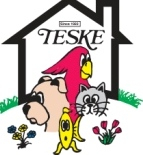What Do Those Numbers Mean To Me?
Every bag of analysed fertilizer has three numbers displayed. So what are those numbers and why should I care?
If those three numbers are not displayed, it means the fertilizer has not been analysed. You don't know what you are getting. You may not be getting your money's worth. Even worse, you may be using a fertilizer with too much quick release nitrogen that will burn your plants. It is important to pay attention to those numbers so you get the right fertilizer for the job.
Those three numbers are always displayed in the same order. While there are often trace elements present in quality fertilizers, those three numbers are the most important. Nitrogen, Phosphorous and Potassium. These are the chemicals your plants use the most. They may be from natural, organic sources or from synthetic sources. The numbers don't tell you where they came from, just how much there is. The proportion of each is very important to what you are growing.
Nitrogen. Nitrogen is often the highest number. Nitrogen gives green, leafy growth. This is a good thing if you are growing grass or corn or tropical plants. It may not be a good thing if you are growing fruit, vegetables or flowers. If the proportion of nitrogen you use on your flowers or food is higher than the phosphorous you will get very large plants and no flowers or food. When growing flowers or food you want the middle number to be the highest.
How much nitrogen is there is annother issue. Too much nitrogen at one time is a bad thing. Nitrogen washes through the soil. You can not put a bunch down in the spring and be done for the year. Spring rains will wash it all away, and it may burned or damaged you lawn before it goes.
If too much fast acting nitrogen is applied you may experience rapid growth. This is not a good thing. Too rapid growth will lead to disease. This is especially important when growing grass in shade. Too rapid growth is one of the causes of the calcium deficiency leading to blossom end rot in tomatoes.
Some nitrogen is fast release and some is slow release. Ammonium nitrogen is fast and responds to moisture and temperature. You often see this in the fertilizers you spray on lawns. It gives a quick green, but it doesn't last and you may end up with disease. Urea nitrogen is a slower release. Organic fertilizers provide the slowest release. However, not all organics are the same. The analysis on even fish emulsion varies with the source.
Bottom line on nitrogen: If you want green, leafy growth it should be the highest number of the three. Don't use a lot of fast release. Don't use too much at one time. Do apply on a regular basis since it doesn't stay where it is put. Organics are best.
Phosphorous. This gives you color. Phosphorous stimulates anything having to do with seeds. Fertilome New Lawn Starter Fertilizer has a high middle number because it helps seeds germinate. Flower and tomato food have a high middle number because the goal of the flower or tomato is to make a seed. Phosphorous give you flower power.
It took me forever to understand this part. Phosphorous does not move through to soil like nitrogen. It says where you put it. Throwing some phosphorous on the ground around your tomatoes is not going to do much good because the roots can't get to it. To get the phosphorous to the roots you need to add a granular fertilizer in the planting hole at the time of planting, work the fertilizer into the soil just outside the root zone or use a water soluable fertilizer. Water soluable fertilizers are disolved in water. The phosphorous can then be moved down into the root zone and used by the plant.
Bottom Line on Phosphorous: If you want flowers or fruit from your plant be sure the middle number is the highest of the three. Many lawn fertilizers no longer contain any phosphorous at all. That's o.k. The only time your lawn needs some added is when you are starting new seeds.
Potassium. Potassium gives you root growth, disease resistance and wintering ability. The potassium is higher in Fertilome Winterizer fertilizer. At Teske's we say, Winterizer is the most important feeding of the year. When you use winterizer your lawn will green up faster in the spring. If you have had issues with plant disease it is especially important that your feedings contain potassium. If you are growing root crops or investing in long term plants like perennials, shrubs and trees, be sure your fertilizer gives a good dose of potassium.
Bottom Line on Potassium. Winterizer is the most important feeding of the year for your lawn. Don't skip it. I know it's getting cold and you have all that raking to do. Feed your lawn, anyway. It's healthy.
Please let me know if this has been helpful or if I've just confused you further. I talk about this a lot with clients who walk into the store. It is important to pick the right fertilizer for the job.

